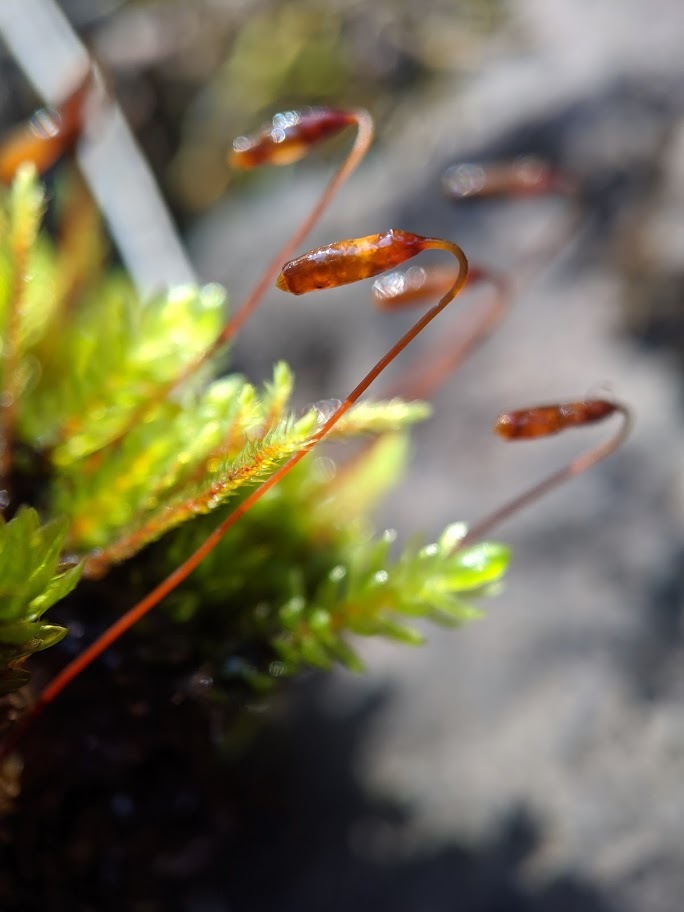Ptychostomum pseudotriquetrum
(Hedw.) J.R.Spence & H.P.RamsayDioicous. Asexual propagules absent. Dense tufts or open mats, greenish to reddish, glossy. Stems often forked, 10–50 (100) mm long, dark red to nearly black toward base, densely tomentose toward base with red-brown rhizoids. Leaves erecto-patent to wide-spreading when moist, shrunken and incurved or ± twisted around stem when dry, ovate to ovate-lanceolate, 2–3.5 mm long, ±concave; apex acute; costa percurrent to short-excurrent; margin denticulate toward apex or entire, recurved, with elongate cells forming a distinct border; laminal cells in apical half broadly hexagonal, 20–40 μm long, 12–20 μm wide; basal laminal cells short- to long-rectangular, reddish; alar cells inflated. Seta 10–30 mm long, pale brown toward capsule, red toward base. Capsule pendent, broadly pyriform or obloid-cylindric, 3–4.5 mm long. Peristome well developed, with basal membrane half the height of exostome; cilia 2 or 3, filiform. Operculum conic, apiculate.
GleP, GipP, CVU, GGr, HSF, VAlp. Along and south of the Great Dividing Range in subalpine woodland, sclerophyll forest, or beside streams and swamps. Also NSW, ACT and Tas. Temperate to polar regions of the world.
 Spinning
Spinning
